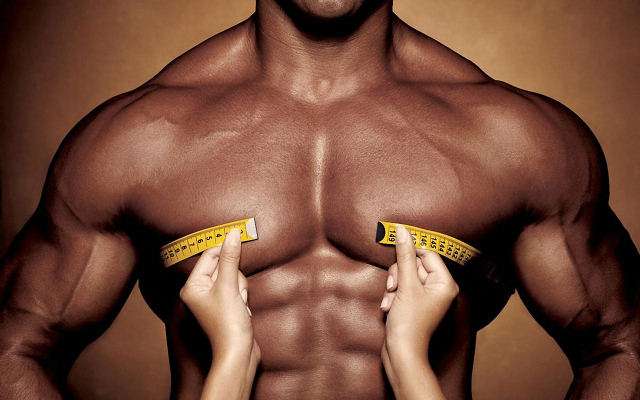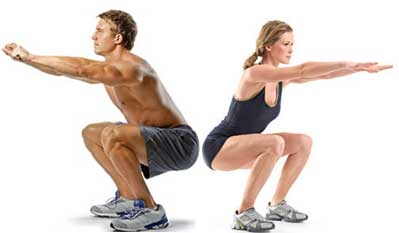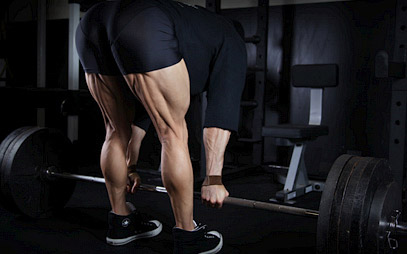I love the human body. . .especially some bodies! Nice bodies kind of run in my family, if I do say so myself. Muscles are something I have always loved, even if I don't have very large ones. . .my younger brothers do.
It's hard not to appreciate some chiseled muscles, even if it's just for their looks! I am going to get a little more deep and not so superficial here though and talk about the actual names and workings of those muscles.
(You probably know a good many of these muscles already, so don't get too stressed thinking about this stuff.)
Muscles of the arms for instance, which include the: biceps, triceps, & deltoids.

When someone says "make a muscle", or "flex your muscle" they are basically asking to see your biceps. Did you know that what you are showing them is really a mouse in your arm!
The word biceps comes from the Latin word musculus, or “little mouse”, because the appearance of a flexed biceps resembles the shape of the back of a mouse. If you want to turn your little mouse into a big mouse, you will need to train it.
Did you know that the biceps make up only about 33% of actual arm size though? The rest mainly consists of the triceps.
Moving on. . .
We have the muscles the chest: pectoralis major & minor, also known as pecs. One is over and one is under. One smaller, thus like a minor or small child. . .or so I remember them. This is what they look like on the inside of the body. . .

and this is what they look like on the outside of the body. . .

 |
| Internal oblique |
In the front of the abdomen and connecting to the rib cage we have many layers as you can see in the picture below: we won't get into them all though.

 |
| External oblique |
We'll start with the middle ones to the sides for now. They are called the two Obliques. The internal and external. One on top of the other.
If you can't guess by the name which is which. . .the internal oblique is where the arrow is.
All the area in the middle is
called the Rectus abdominus. (As seen below.)
 |
| rectus abdominus |
Moving on to the most popular areas for massage. . . we get into the backside or posterior of the rib cage where we have the deep layers of the Serratus posterior. It has two parts, a superior (or higher) one, as well as an inferior (or lower) one. So if you remember the regions we first talked about in my last post, these names should be a good indication of where they are found.
We also have another Serratus not quite in the back. It is called the Serratus Anterior (above right), because it is more in the front. (Anterior often means "front", but in this case it can also mean "nearer the front.")
To find this muscle feel the nook between your lowest rib ( if you are thin and can find it) and your spine — right where the stability of the rib cage gives way to the relative instability of the lumbar spine. Muscles tend to bunch up around this joint between the last of the thoracic vertebrae and the first of the lumbar vertebra.
Quadratus lumborum — “QL” for short — is a flat sheet of a muscle, spanning the space between the ribs and the hips.
The QL has three pretty major jobs, which is why it often needs massage work: it acts as a prime mover, a postural muscle, and a respiratory muscle. Because of the latter, some people even experience discomfort when breathing!
The QL has three pretty major jobs, which is why it often needs massage work: it acts as a prime mover, a postural muscle, and a respiratory muscle. Because of the latter, some people even experience discomfort when breathing!
Now on to where people generally carry most of their stress/have most of their issues with tense muscles.

Like the tight ropes used by trapeze artists, the trapezius muscles, often referred to as traps, are often tight. They are big and bulky on most people, and a great starting place to work on.
(We already discussed the deltoids on the arms.)
The Infraspinatus is very useful in stabilizing the shoulder right under it, and helping you wave, as well as other things. When it is tight or messed up though, it tends to refer the pain to other places, so you may not realize it is the cause of your troubles. Referred pain from three infraspinatus points in particular are felt deep in the front of the shoulder joint and along the upper arm. The pain may also go down into the forearm and hand in severe cases. Source
This is apparently a common problem as at least a few family members have had problems with this muscle.

Also there are the major teres and minor teres muscles. (Can't see them well above so here is a better shot.) Trigger Points in the Teres minor (the higher and smaller one in the picture) refer pain to a very small and specific area of the back of the shoulder, near the outer edge of the shoulder blade. Numbness and tingling, but not pain, in the fourth and fifth fingers is also commonly associated with Teres minor.
Teres major trigger points create a feeling of sharp pain in the back of the shoulder and arm, often feeling like pain in the Deltoid muscle.
Source
These two muscles are small, but apparently very important!
Lastly in the back is the Latissimus dorsi, also known as the "lats." The name means “broadest muscle of the back.”
Now let's talk about the legs. . .
First there are the Quadriceps, and like their name implies, there are 4 of them.
First there are the Quadriceps, and like their name implies, there are 4 of them.

If this picture isn't clear enough as to location, the Quads are in the front, and hurt when you do this.

Then there is the back of the legs, where you have your hamstrings. This is what they look like when using poor body mechanics.
They are also a group, but this time of three muscles, and these are their names.

And this is what they look like together inside you.
Putting the upper legs into perspective, this is what they do. . .
and where they give force.
 |
| tibialis anterior |
Now to the lower leg muscles . . . like the one to the left called Tibialis Anterior.
If we break down the name, the Tibialis part is because of the Tibia bone (the bones we will get into later), and anterior, because it is away from the middle of the body or as they say in anatomy the medial.
Recently I have been doing a lot of gardening and shovel work, and let me tell you, my tibialis anterior and hamstrings have been killing me!
To feel your tibialis anteriors, instead of a long day of gardening, you can do this exercise.
I am speaking of a muscle, not a bone, and it is perfectly normal.
It's called the fibularis longus, or sometimes the Peroneus longus.
If you need a memory hook for separating the tibia from the fibula, remember this, the tibia is on the top when you feel the front of your leg.
This is some pretty easy stuff folks, like I said. Mainly common sense, at least so far. . .crossing my fingers.





.jpg)




No comments:
Post a Comment